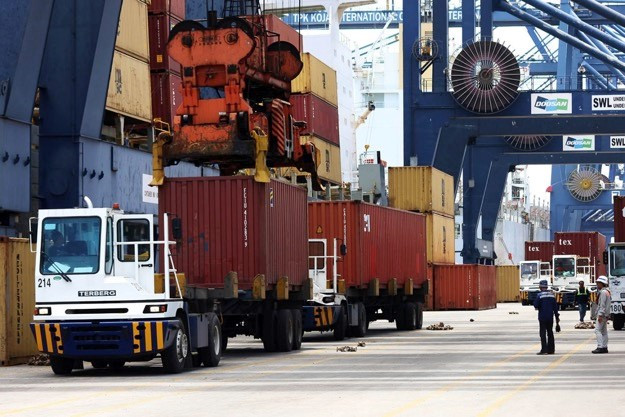Popular Reads
Top Results
Can't find what you're looking for?
View all search resultsPopular Reads
Top Results
Can't find what you're looking for?
View all search resultsCurrency war vs economic stability
The Federal Reserve, the European Central Bank (ECB) and the Bank of Japan have all applied additional easing measures to their monetary policy management in the past couple of months
Change text size
Gift Premium Articles
to Anyone

T
he Federal Reserve, the European Central Bank (ECB) and the Bank of Japan have all applied additional easing measures to their monetary policy management in the past couple of months. The Bank of England got there first with additional easing announced earlier in the year.
The Swiss National Bank is printing money on a scale that is almost Zimbabwean in its volume. Are these salvos in a war to devalue currencies — a war that must ultimately fail (for you have to have one strong currency to devalue against)?
Or are central banks trying to devalue their currencies against commodities like oil?
A number of commentators see something hostile in all of this monetary easing. It has been described as protectionist, and complaints have been leveled at the United States Federal Reserve in particular. Chairman Bernanke is cast as someone recklessly throwing dollar bills from the roof of the Federal Reserve building onto the heads of passers by. Printing of dollars tends to engineer a special sort of concern, as the dollar remains the preeminent reserve currency in foreign exchange reserves — and of course because commodities tend to be priced in dollars.
However, this obsession with money supply is to miss the point. Money supply is only half of the equation. The critical issue at the moment is not whether central banks are printing more money or not, but whether there is any demand for the money that they are printing.
The obvious case study for this, because it is so dramatic, is Switzerland. The Swiss National Bank has expanded its balance sheet to well over 70 percent of the size of the Swiss economy.
The US, in comparison, has a Federal Reserve balance sheet today that is around 20 percent of the size of the US economy (and was below 5 percent prior to the financial crisis). Surely, given this level of monetary expansion, the Swiss franc should be collapsing and hyperinflation stalking the streets of Zurich?
Of course this is not what is happening at all. The reason that the Swiss National Bank is producing more Swiss francs is that the demand for Swiss franc cash is high, and has indeed been rising. Conservative investors seek the security of the Swiss franc, and they demand cash.
Left unchecked this would produce an horrific appreciation of the Swiss franc, and deflation in Switzerland. By supplying cash to meet the demand, the Swiss authorities have maintained stability. The result is that the printing press has not led to a collapse in the value of the Swiss franc, but merely averted its rapid rise.
Switzerland goes to underscore how important it is to consider demand alongside supply when looking at monetary policy. This translates directly into currency markets, much of the time. There is little link between central bank balance sheets (printing money) and the value of a currency, because the demand for currency ebbs and flows as does the supply.
If we look at the global economy today, it seems fairly evident that the need for cash in the Euro area is rising. Banks are reluctant to lend, companies and consumer are reluctant to borrow, and the Euro economy seems to be becoming a more cash based economy than was the case before. The ECB needs to provide cash to meet that demand. This cash will not turn up in financial markets.
In the US, the level of money demand is more difficult to determine. Some parts of the US economy (middle class consumers, for instance) are reducing their demand for cash.
Other parts of the economy (small businesses are a good example) are still demanding cash. Internationally, the demand for dollars is rising. Thus the Federal Reserve is supplying cash where there is a need, but also may create some small surplus cash that is not being demanded.
What happens if a central bank prints money that is not in fact demanded? Then, of course, there is an excess of money in the system. Too much liquidity will tend to overflow, and there are a number of routes that it can take.
Money can flow into foreign exchange markets (weakening the currency) into asset or commodity markets (threatening bubbles) or into domestic shops (leading to inflation). The point here is that if there is excess liquidity being created, then prices will change.
So where are we in the so called currency war? We are nowhere near a battlefield. Central banks are responding to spare capacity in their economies, and a demand for cash that is quite widespread. It takes excess money to influence currencies, and there is little sign of excess money for now.
For commodity prices, if investors believe that printing money will work, and economic growth will be better than was previously expected, commodity prices will rise. That should not be taken as a consequence of excess liquidity, but of monetary policy stabilizing economic activity.
The writer is deputy head, Global Economics, UBS Investment Bank.









